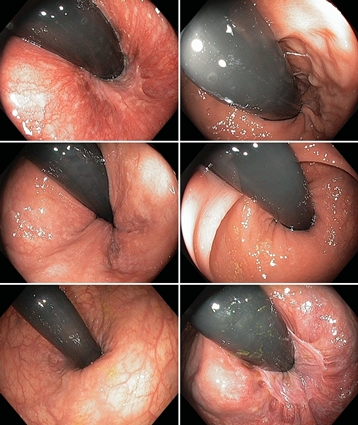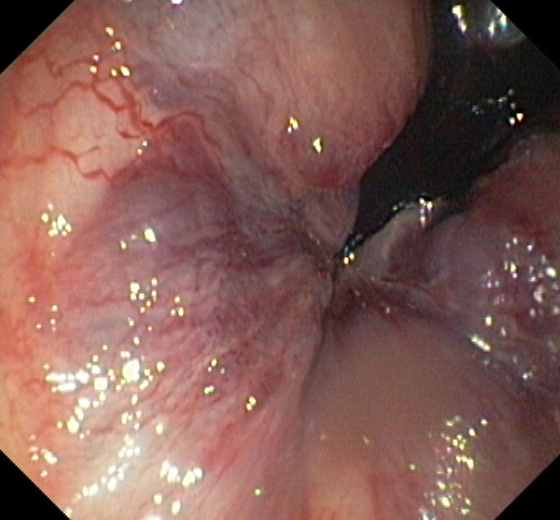
Back to the Gastrointestinal Image Gallery |
|
Haemorrhoids (also called piles) are enlarged superior and inferior haemorrhoidal veins in the anal region. Haemorrhoids is the most common disease in the anus, occuring in up to 50% of the adult population in the western world. They are thought to be a consequence of chronic obstipation. They can be classified into four groups: First degree, second degree and third degree haemorrhoids. First degree haemorrhoids do not appear at the anus, and the main symptom is bleeding after defecation. Second degree haemorrhoids protrude through the anus, and third degree haemorrhoids remain outside the anus unless pushed back manually. Fourth degree haemorrhoidscannot be pushed back inside the anus. Beside bleeding the main symptoms are anal pruritus, pain or discomfort and fecal soiling. The main treatment is treatment of obstipation by high fiber diet and enough fluid intake. The effect of local treatment with suppositorius and ointments is limited, but can give some symptomatic relieve. Rubber band ligation, injection sclerotherapy, photocoagulation or surgical haemorrhoidectomy is sometimes needed. Thrombosis of an external haemorrhoid is not dangerous but very painful.
|
You might also be interested in:
 Collage: Anus |
 |
 |
 |
 |
 |
 |
 |
 |
 |
 |






 >
>

